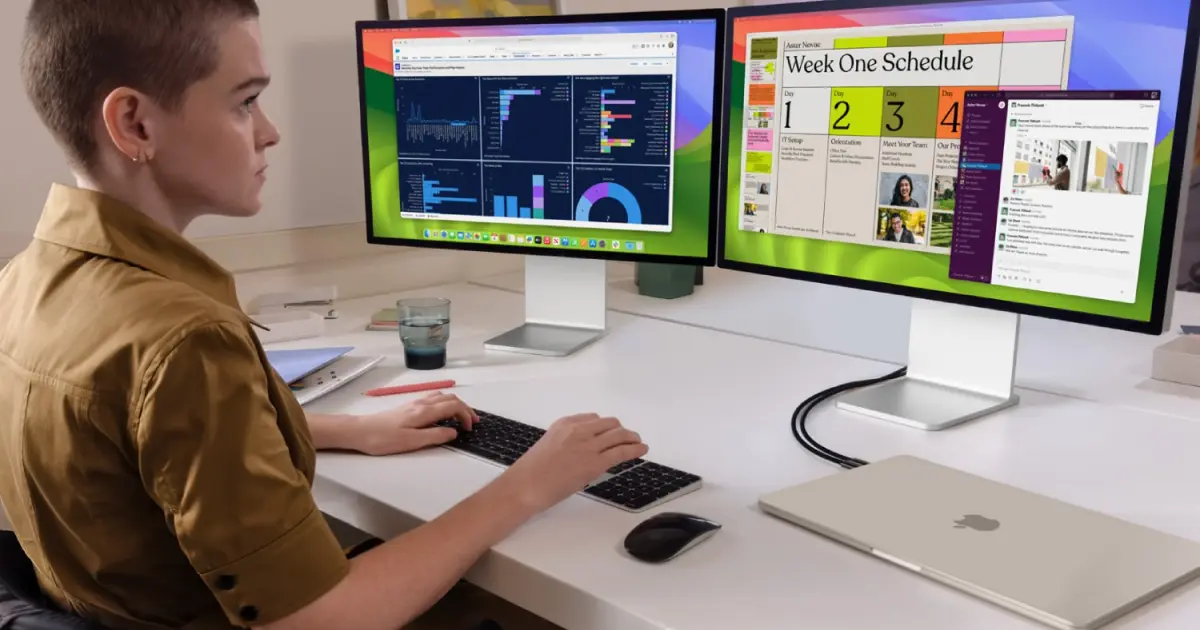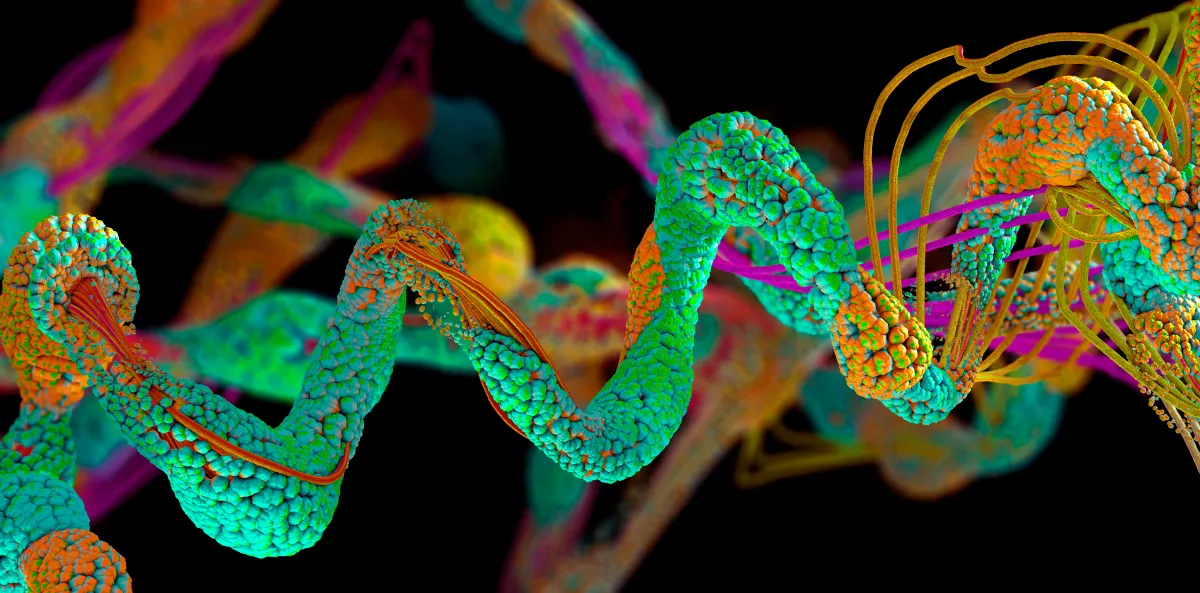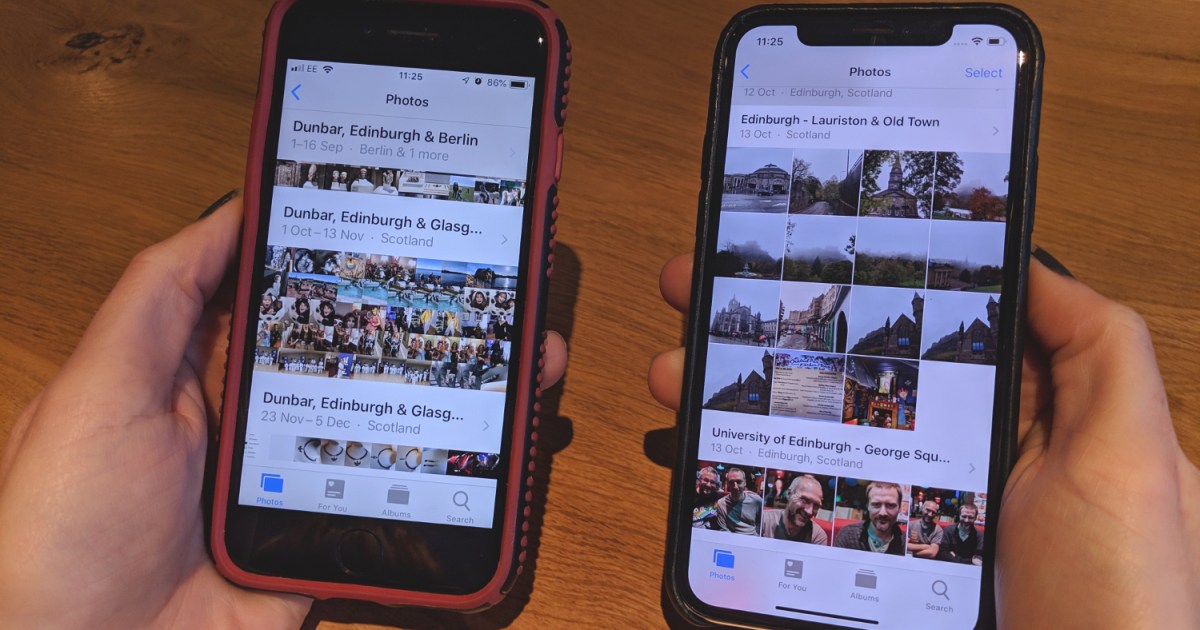一个为盲人设计的机器人:史蒂夫·旺德在CES展上试用
谦逊的滑行 – 一款迷你类吸尘器的移动助力,带着崇高的使命帮助视障者导航世界
“`html
AI robot designed to replace canes and guide dogs for the visually impaired.

You know you’ve made it when music legend Stevie Wonder, who is blind, takes your brand new robotic device for the blind for a spin at the Consumer Electronics Show in Las Vegas.
Outfitted in his trademark dark glasses, Wonder pushes what looks like a miniature vacuum cleaner with big wheels attached to a stick along a corridor, makes a turn, and comes back.
🌟 Also: The 15 best robots and AI tech we saw at CES 2024 🌟
It may not look very sophisticated for a robot, but Amos Miller – founder and inventor of the ‘Glide’ – thinks it will transform the lives of those who suffer from impaired vision.
According to the American Community Survey, there were 547,083 children with vision difficulty in the US in 2019, and millions more people go blind during their lives as a result of diseases like diabetes or glaucoma.
A World in Darkness
Amos Miller started going blind in his late twenties because of retinitis pigmentosa, a genetic condition that breaks down the light-sensitive tissue in the back of the eye called the retina. Miller was finishing up his computer science degree and looking forward to a career in technology when he lost his sight.
He is among the 7.6 million people in the US today who have suddenly faced this devastating new reality where nothing is as it used to be. Everything has to be re-learned.
Simple tasks – going to the bathroom or fixing a sandwich – become an ordeal.
“Going to the fridge to get a glass of milk used to be something I could do half asleep; after I lost my vision it became a multi-step process, and any error meant I found myself standing, lost in a house I’d lived in for years,” says Kim Tindall, who, like Miller, went blind as an adult.
Tindall had to re-learn practically everything. She attended a course at the Louisiana Center for the Blind (LCB).
🌟 Also: Instant evolution: If AI can design a robot in 26 seconds, what else can it do? 🌟
Miller started his adaptive journey by learning how to use the most pervasive and cost-effective technology that blind people employ to navigate their world – a cane. Over time, he graduated to a service dog. Yet, the more familiar Miller became with the limitations of canes and dogs, the more convinced he was that there had to be a better way to navigate this technology-saturated world.
Now, a guide dog can serve as a much-needed companion as well as an indispensable navigational aid.
But they don’t come cheap. Guide dogs can each cost up to $50,000 to breed and train, and they age quickly. In five or six years, these dogs have worn themselves out and need to be replaced, which makes the whole enterprise both emotionally and financially taxing.
Moreover, replacements aren’t exactly cheap or easily available; only around 10,000 dogs are available every year for a visually impaired population of 7.6 million.
🌟 Also: Robots plus generative AI: Everything you need to know when they work as one 🌟
The cane, priced at only $35, is a much less expensive solution than the canine – but it too has considerable limitations.
The user of a cane has to employ a technique called ‘shorelining’ – essentially tracing the tip of the cane along a curb or the walls of buildings to stay on track. Getting the hang of this typically requires 100 hours of training.
Also, the similarity – and problem – with both canes and dogs is that the blind user must have a very good idea of where they’re going, which means a thorough familiarity with their route, their surroundings, and markers on the way such as mailboxes and trees.
“““html
穿过城市景观盲目行走需要极大的集中注意力,同时也需要保持冷静的心态,不至于在错误转弯和其他导航失误时慌乱不已。
🌟 此外: 这款人工智能应用将很快通过仅使用6-10秒的语音剪辑进行第2型糖尿病筛查 🌟
因此,只有2%至8%的视力受损者使用拐杖以及使用导盲犬的2%。这意味着超过90%的盲人人口过着非常受限制的生活。
“Glide”狗
作为一位软件专业人士,米勒非常适合构想出更好的解决方案。
米勒曾担任英国导盲犬协会主席,也曾是微软研究公司的前产品战略师,他在开发声景应用方面发挥了关键作用,该应用通过音频促进移动独立性。
因此,米勒设计的Glide,尺寸为9英寸×9英寸,既复杂又简约优雅。
这款机器人的轮子上没有安装马达 – 它通过被动动力引导来移动。用户只需将其向前推动即可使其移动,当用户停下时,机器人也会停下。
对于视力受损者来说,被动动力引导是一个至关重要的特点。在引导盲人时最糟糕的事情就是拉着他们走,从而剥夺个体的任何行动能力或控制权。
没有马达也使Glide非常轻便。这款仅重3磅的设备可以很容易地被拖上楼梯,这使得它既易于管理又吸引人。
Glide的轮子上安装了摄像头和传感器,这些设备帮助用户绕过障碍物或简单地刹车。这通过一个优雅的功能实现 – 一个触觉处理把手(配备了六个振动触觉致动器),从地面传回的信息通过它传递给用户。
触觉处理把手反过来向用户传递地形信息。例如,向用户的把手发送双击意味着“减速”。
当涉及导航时,Glide真正表现出色。通过集成谷歌地图等应用程序到系统中,用户现在将更精准且更令人放心地到达目的地。
这也有助于提高店内购物体验 – 对于那些在超市里挣扎着找寻产品的人来说可能是一场噩梦。Glide可以连接到商店应用程序,使用户能够创建购物清单,之后Glide会引导他们找到每一件商品。
Glide的发明者米勒表示,他的公司Glidance仍在研究定价细节,但指出该产品的成本将与移动电话订阅计划相当。
Glidance指出,其产品目前仅针对室内使用进行了优化,正在进行开发,以便为“更复杂的环境,例如悬挑、楼梯、电梯、坡道等” – 最重要的是户外 – 做好准备。
您可以在公司网站上立即注册即将发布的测试版。
🌟 此外: Google Lookout的AI如何为视力受损者描述图像 🌟
随着美国65岁及以上人口数量从2022年的5800万人预计增加到2050年的8200万人(占人口的比例从17%上升到23%),预计患视力受损的人数将迅速增加,原因是老年相关疾病,如青光眼或糖尿病。
Glide及其未来的派生产品可能在缓解与这一老龄化和盲目潮涌相关的创伤方面发挥关键作用。
问答
问: Glide与传统拐杖和导盲犬有何不同?
答: 与需要广泛培训和集中注意力的拐杖不同,Glide为盲人提供了一种更直观和精确的方式来导航周围环境。此外,它消除了与导盲犬相关的高成本和有限可获性。
问: Glide适合户外使用吗?
“““html
A: 目前,Glide 已经优化用于室内使用。然而,Glide 背后的公司 Glidance 正在积极努力使该设备与更复杂的环境兼容,包括户外使用。
Q: Glide 价格对每个人来说都是负担得起的吗?
A: Glidance 还在最终确定定价细节,但他们提到 Glide 的成本将与手机订阅计划相当,这将使视力受损个体更容易获得解决方案。
未来发展与影响
Glide 对视力受损社区来说是一项重大突破。凭借其创新设计和与 Google 地图等技术的整合,Glide 为盲人提供了一种更独立和高效的方式来导航周围环境。
随着人口老龄化和视力丧失人数增加,例如 Glide 的解决方案将在减轻与衰老和失明相关挑战方面变得越来越有价值。
Glide 及类似辅助技术的持续发展将继续改善视力受损个体的生活,促进更大程度的独立和包容。
📚 参考链接:
- 我们在 2024 年 CES 上看到的 15 最佳机器人和 AI 技术
- 瞬间进化: 如果 AI 能在 26 秒内设计出一个机器人,它还能做什么?
- 机器人加生成式 AI: 当它们一起工作时,您需要了解的一切
- 这款 AI 应用将很快通过仅使用 6-10 秒的语音片段筛查 2 型糖尿病
- Google Lookout 的 AI 如何为视力受损者描述图像
亲爱的读者,您对盲人专用的 Glide 机器人有什么想法?您认为它会彻底改变视力受损个人的生活吗?分享您的看法,让我们传播这一令人惊叹的创新!✨💡🤖
别忘了在社交媒体上分享这篇文章,提高意识并鼓励其他人加入讨论。一起,我们能改变现状!🌟👩💻🌎
“`






